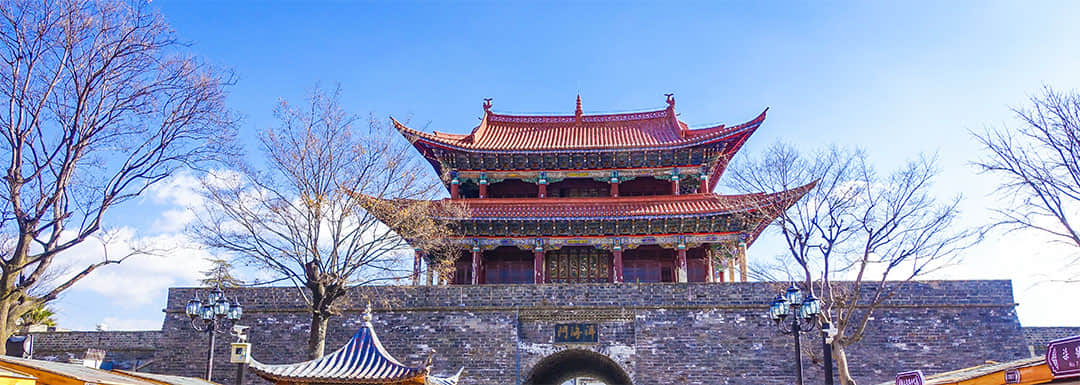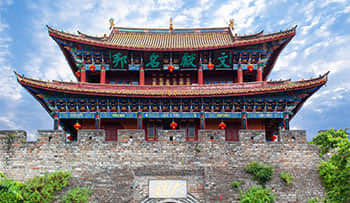Dali Ancient City

The Ancient City of Dali is located at the foot of the beautiful Cang Mountain. It was the capital of the ancient Nanzhao Kingdom and Dali Kingdom. It’s a historical and beautiful town. The weather is warm and mild, the local people enjoy sunshine almost every day, and they have a peaceful, comfortable life. Their lifestyle is bound to make tourists from other places jealous.
- Chinese name: 大理古城 Dà lǐ gǔ chéng
- Constructed: 1382AD
- Suggested time: 2-3 hours
- Ticket: free
- Address: 42 Yita Road, Dali City
- Open hours: all day
- Best time to visit: All year around
- How to get there: take the No. 4 and No. 8 bus from Xiaguan
Highlights of Dali Ancient City
 Wenxian Gateway
Wenxian Gateway Wenxian Gateway (The First Gateway in the ancient city)
One km away from the south gate of Dali Ancient City, the Wenxian Gate is known as the first gate of the ancient city and is the landmark building of the ancient city of Dali. It was built during the reign of Emperor Kangxi in the Qing Dynasty. The claim of the slogan of the Yunnan Admiral was published in the 40th year of Emperor Kangxi (AD 1701). The gateway straddles the south side and enters the channel of Dali ancient city. Willow trees are along the road so that it is pleasantly poetic and picturesque to walk here. This was the gateway for the government to welcome the nobles. The upper building is a two-story Xiashan-style civil stone structure with typical Bai architectural features. It stands on the masonry doorway and is magnificent.
Huguo Road (Foreign Street)
 Huguo Road (Foreign Street)
Huguo Road (Foreign Street) The Huguo Road that crosses from east to west of the ancient city is known as the ‘foreigner street’. Here, one after another, are Chinese and Western restaurants, cafes, teahouses and handicraft shops all along this road. Signatures and advertisements are often written in foreign languages. Foreign tourists gather here, looking for the oriental charm of Dali, and it is gradually becoming representative of the western world for the locals.
The Christian Church
The Christian Church of Dali Ancient City is located at the intersection of Fuxing Road and Heping Road. It was built in June, 1904. The main structure of the church is a civil structure (made up of beams) with a four-story tiled roof. It maintains the style of the Western European churches and also holds a strong Bai architecture style. It is a perfect combination of the two styles.
Wuhua Building (The No. 1 Building)
 Wuhua Building
Wuhua Building Wuhua Building is the national guesthouse of the ancient Nanzhao Wang, also known as Wuhualou. Since the beginning of Nanzhao, the Wuhua Building has been burned many times and has been rebuilt several times. Today's Wuhua Building area has formed a large scale calligraphy and painting market. The business includes calligraphy, Chinese landscape paintings, figures, as well as leather paintings and oil paintings.
Dali Municipal Museum
The collection on display in Dali City Municipal Museum includes nearly 10,000 pieces of precious cultural relics from the Neolithic Age to modern times in Dali. The permanent exhibitions in the museum include the ‘Historical Cultural Relics Exhibition’, ‘Ming Dynasty Ceramics Exhibition’, ‘Buddhist Art Exhibition’ and ‘Ancient Painting and Calligraphy Art Exhibition’, ‘Yunnan Admiral History Exhibition’ and ‘Du Wenxiu Uprising Picture Exhibition’, in six fixed exhibition halls.
Drop us a line and we'll connect you with the top China expert in no time!